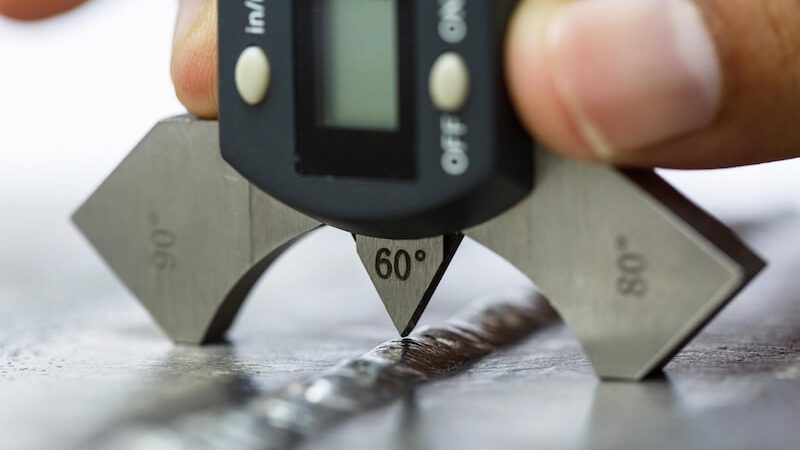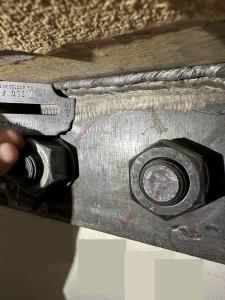Trusted Welding Inspection Gilbert Arizona: Secret Factors to Take Into Consideration for Ideal Results
Discovering the Value of Welding Inspection in Industrial Applications: Guarding Versus Failures and Enhancing Long Life
Welding assessment offers as an essential line of protection in commercial applications, making sure the architectural stability and dependability of bonded elements. By systematically identifying problems such as porosity and incomplete fusion, examinations not just protect against failings yet likewise prolong the life expectancy of necessary properties.
Duty of Welding Examination
Welding examination acts as a critical safeguard in commercial applications, making certain that bonded frameworks satisfy specified requirements of top quality and safety. This procedure entails a systematic examination of welds to verify their stability, strength, and compliance with established codes and requirements. The role of welding evaluation is diverse, encompassing both visual evaluations and non-destructive screening methods, which may consist of ultrasonic, radiographic, or magnetic fragment screening.
Reliable welding assessment determines prospective concerns early, minimizing the threat of disastrous failures that can emerge from poor welds. By making certain that welds are implemented according to create specifications, assessors contribute to the total structural reliability and long life of elements in important applications, such as stress vessels, pipes, and architectural structures.
Usual Welding Issues

One of the most prevalent defects is porosity, characterized by tiny gas pockets entraped within the weld steel. This happens because of contaminants or improper securing gas, endangering the weld's stamina. One more significant defect is insufficient combination, where the weld metal fails to bond properly with the base product, potentially resulting in structural weak points.

Fractures can also create throughout or after the welding process, usually connected to thermal tensions or improper air conditioning rates. In addition, damaging, where the base metal is deteriorated along the weld grain, can deteriorate the joint and is typically brought on by extreme heat input or wrong technique.
In addition, lack of infiltration occurs when the weld steel does not reach the origin of the joint, leading to insufficient strength. Comprehending these usual problems is critical for welders and inspectors alike to make sure that welded frameworks satisfy security and efficiency criteria, inevitably avoiding prospective failings in commercial applications.
Advantages of Routine Evaluations
Regular assessments act as an important safeguard in guaranteeing the integrity and long life of welded structures. These examinations recognize potential problems and weaknesses that might endanger the honesty of welds, allowing for timely remediation before problems rise. By applying a structured evaluation routine, organizations can dramatically decrease the danger of disastrous failings that might lead to costly downtime, equipment replacement, or perhaps crashes.
Moreover, regular inspections add to improved high quality control throughout the welding procedure. By sticking to a regular inspection schedule, companies can make sure that their welding techniques fulfill established high quality criteria and finest techniques. This not only fosters a culture of responsibility however additionally urges continual improvement among welding workers.
Furthermore, normal examinations facilitate better maintenance preparation. By recognizing damage early, companies can strategically arrange fixings and replacements, minimizing disruption to operations. This positive technique eventually leads to extended asset lifespan and improved overall productivity.
Last but not least, a dedication to routine inspections can enhance a firm's credibility in the sector. Customers and stakeholders significantly value companies that prioritize safety and security and high quality, thus boosting depend on and potentially causing raised company chances.
Industry Criteria and Rules
Abiding by industry criteria and regulations is a fundamental aspect of welding evaluation that enhances the benefits of regular examinations. These criteria, established by organizations such as the American Welding Society (AWS) and the American Culture of Mechanical Designers (ASME), provide a framework for finest methods in welding procedures, products, and inspection techniques. Compliance with these guidelines makes certain that welds fulfill the needed top quality and safety and security benchmarks, substantially lowering the risk of structural failures.
Regulatory bodies like the Occupational Safety and Health Administration (OSHA) even more implement standards that shield workers and the atmosphere during welding procedures. By adhering to these developed criteria, sectors can boost the reliability of their structures and parts, ensuring they perform as meant under various operational conditions.
Moreover, adherence to sector criteria cultivates consistency in high quality control, assisting in smoother interaction among stakeholders and regulatory agencies. This alignment not just lessens obligation dangers yet additionally boosts the reliability of organizations in competitive markets. Welding Inspection Gilbert Arizona. Ultimately, compliance with welding standards and laws is not just a legal obligation; it is a vital financial investment in security, efficiency, and long-term functional success
Future Trends in Welding Examination
As markets continue to develop, the future of welding inspection is positioned to incorporate advanced technologies that boost precision and effectiveness. Among one of the most significant fads is the adoption of automation and robotics in inspection procedures. Automated systems can carry out evaluations swiftly, minimizing human error and raising throughput in producing environments.
In addition, the assimilation of expert system (AI) and artificial intelligence formulas will allow predictive analytics, enabling real-time analyses and proactive upkeep. By analyzing data from previous examinations, these technologies can determine patterns that can indicate prospective failings, thereby prolonging the life expectancy of bonded components.
Furthermore, non-destructive screening (NDT) techniques are anticipated to come to be extra sophisticated, utilizing tools such as drones and autonomous lorries outfitted with advanced sensing units. Welding Inspection Gilbert Arizona. These advancements will content enhance the capability to check hazardous or hard-to-reach areas without jeopardizing security
In addition, the fad in the direction of digitalization will certainly lead to improved data management systems why not find out more that help with much better tracking, reporting, and compliance with industry standards. In summary, the future of welding inspection is characterized by technological advancements that promise to considerably improve reliability, safety, and functional performance in numerous commercial applications.
Final Thought
In final thought, welding assessment serves an important function in ensuring the integrity and durability of bonded frameworks throughout different industrial applications. By identifying defects such as porosity and insufficient blend, routine evaluations play a significant role in threat reduction and quality control. Adherence to industry criteria and policies even more boosts functional safety and reliability. As innovations in modern technology remain to advance, the future of welding assessment promises raised precision and efficiency, inevitably adding to the longevity of essential facilities.
Welding examination serves as an essential line of defense in commercial applications, ensuring the architectural integrity and integrity of welded elements.Welding examination serves as a vital safeguard in industrial applications, making certain that welded structures satisfy defined standards of high quality and safety and security. Inevitably, the role of welding assessment is essential in promoting security, improving efficiency, and shielding investments in industrial infrastructure.
These requirements, established by companies such as the American Welding Culture (AWS) and the American Culture of Mechanical Designers (ASME), give a structure for best practices in welding processes, materials, and examination techniques.In verdict, welding examination serves an essential function find in ensuring the honesty and toughness of bonded structures across various commercial applications.